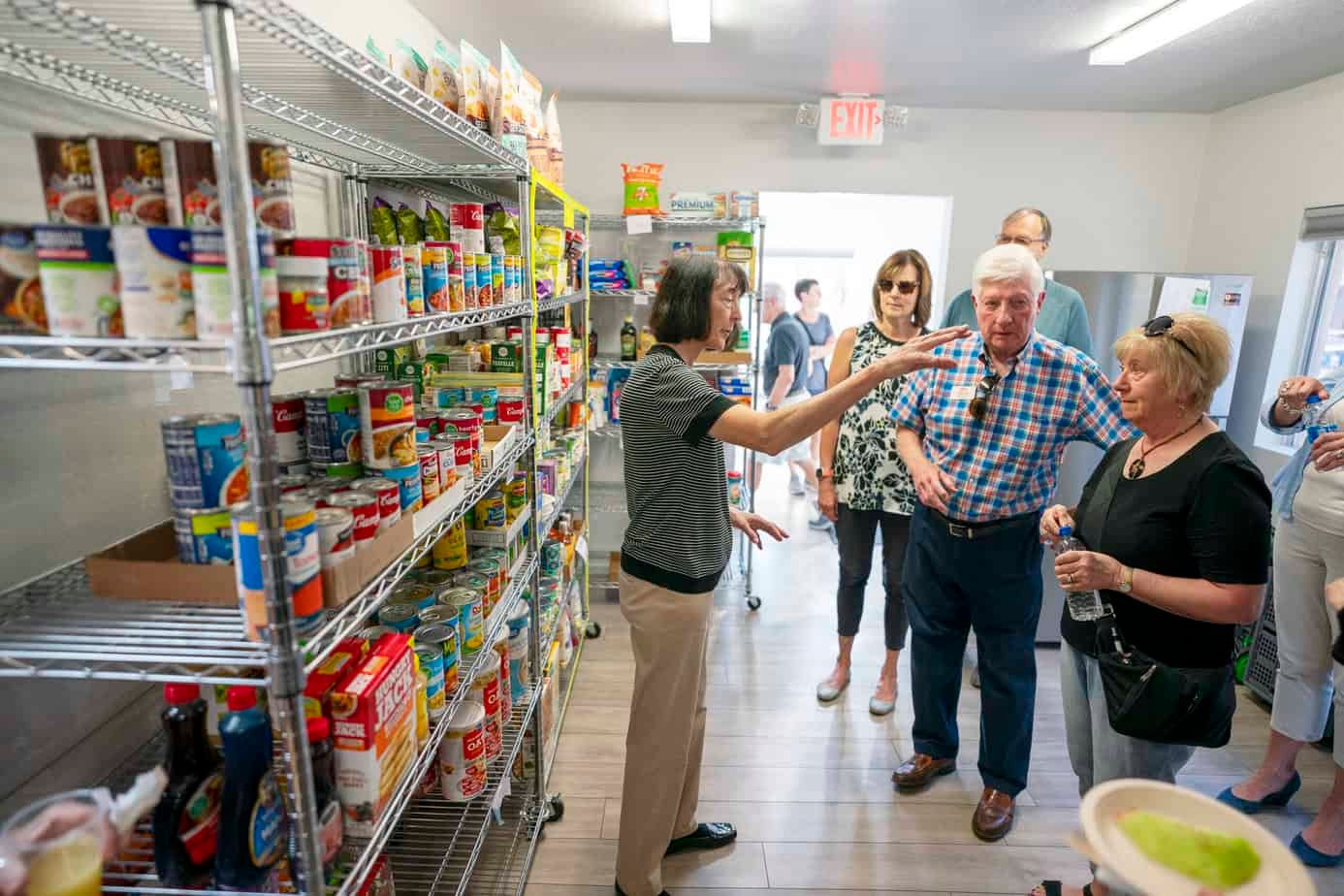County News
Food Aid Brings Hope to Sedona’s Hungry Community

Food insecurity remains a pressing issue in Sedona and the Verde Valley, impacting a diverse range of residents, including seniors, working families, and the homeless. Various organizations, both religious and secular, are stepping up to provide necessary food assistance.
As summer gives way to fall, demand for food assistance rises significantly, says Sedona Community Food Bank Executive Director Cathleen Healy-Baiza. “A good amount of our clients leave for the summer, and then they come back in the fall. We see the surge in September,” she noted.
Recent data indicates a marked increase in clients, with 202 households reported last week alone. Just on the morning of September 25, the food bank helped 133 families in four hours. Throughout the summer, the food bank has been serving around 170 to 180 families weekly, a notable rise from the typical 150 to 160.
This increase can also be linked to the food bank’s relocation to a more accessible facility at 30 Inspirational Drive earlier this year. Healy-Baiza explained that the upcoming See’s Candy Wagon sale, running from November 8 through Thanksgiving and again from December 6 to 24, typically raises between $10,000 and $12,000 for the organization. “We’re starting our coat collection, which we call the Big Give,” she added, with distributions beginning the first week of December.
Contribution options include participation in the Verde Valley Neighborhood Food Project. Donors will have a collection day on December 14. Residents place food donations outside their homes for pickup by neighborhood coordinators, aiding multiple local food programs in the process.
The Sedona chapter of St. Vincent de Paul also addresses food needs, providing a free weekly pantry every Thursday from 9 to 11 a.m. in the parking lot of St. John Vianney Catholic Church. Grant writer Andrew Brearley noted the diverse clientele, comprising about 50% Hispanic and 50% Anglo customers, spanning all ages.
Demand at St. Vincent de Paul can sometimes surpass the available supply, compelling them to purchase additional food after each weekly closure. “Nobody gets turned away, but they may not get the exact item they want,” said client worker Maureen Koza.
In the Village of Oak Creek, Project Fill the Need operates a pantry out of the former Big Park Community School, open the last Saturday of each month. With an average of 40 to 50 clients monthly, this volunteer-led organization relies entirely on donations.
Verde Valley School also plays a role in combating food insecurity through its Weekend Meal Program, which prepares and distributes meals to local schools. As of last spring, they increased deliveries from 80 meals per week to 117, with partnerships facilitating essential funding and resources.
Christ Lutheran Church supports various local food pantries, having raised over $168,000 through its annual auction to aid emergency food providers. The next auction will run from February 16 to March 2, 2025.
Additionally, St. Andrew’s Episcopal Church hosts a Monday night supper from 5 to 6 p.m., providing hot meals to those in need while fostering community connections. Attendance typically fluctuates between 40 and 50, with many diners taking home extra meals for neighbors.
Meals on Wheels has been serving homebound seniors in Sedona for 40 years, delivering nutritious meals five days a week. Each meal includes diverse components catered to individual needs, with no strict pricing structure in place.
Residents in need of food assistance may also benefit from home delivery options provided by Manzanita Outreach and the Sedona Community Food Bank. Manzanita’s program has expanded significantly since its inception, now serving 309 individuals in Sedona.
For those seeking support, various organizations in Yavapai County offer assistance programs. Many of these organizations encourage volunteer involvement as a means of fostering community engagement and addressing food insecurity.


















